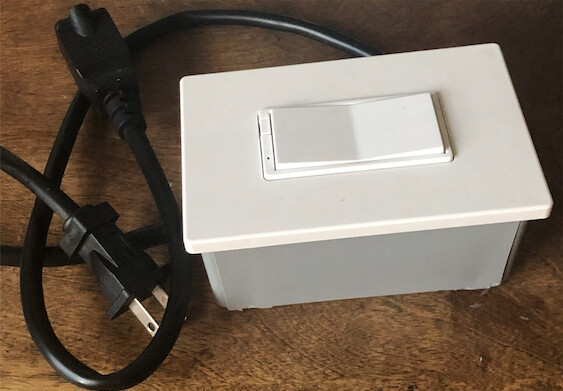I picked up a
- 8' extension cord,
- a 'screwless' cover plate,
- plastic 1 gang box, Dremeled off the "ears"

I cut the Extension cord into two parts and then wired up the switch. It's basically a "Lumpy" extension cord. I specifically picked the extension cord to have one socket end, not the triple that is so normal. That meant my choices of color and gauge were limited to stock-on-hand.


